 geom_hex
geom_hex
Divides the plot plane into regular hexagons and counts the number
of cases in each hexagon. Result (by default count) is mapped to fill
aesthetic. This is a useful alternative to geom_point in the presence
of overplotting.
Aesthetics
Other Properties
| bins |
numeric vector giving number of bins in both vertical and horizontal directions. Set to 30 by default |
| binwidth |
numeric vector giving bin width in both vertical and horizontal directions. Overrides bins if both set |
Computed Variables
| count |
number of points in bin |
| density |
density estimate |
| ncount |
count, scaled to maximum of 1 |
| ndensity |
density estimate, scaled to maximum of 1 |
Similar Geometries
geom_bin2d,
geom_density2D
Description and Details
Using the described geometry, you can insert a geometric layer into your
data visualization – a hexagons defined by positional aesthetics
properties (x and y) and count as Computed Variable. You can find
this geometry in the ribbon toolbar tab Layers, under the 2D button.
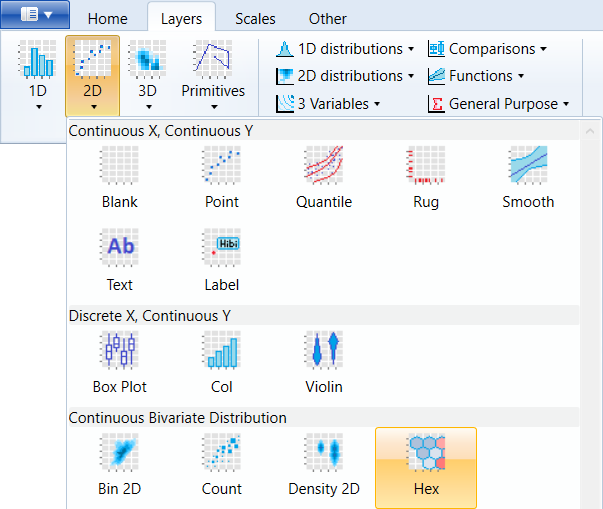
As with geom_bin2d geometry, you can use geom_hex to display continuous
bivariate distribution. Use this geometry as an alternative if you want
to display the spatial distribution of a large number of values (points).
As an example, we can use a diamonds dataset that contains over
60,000 records. An example of the relationship between the price of diamond
and carat is shown in the following figure.
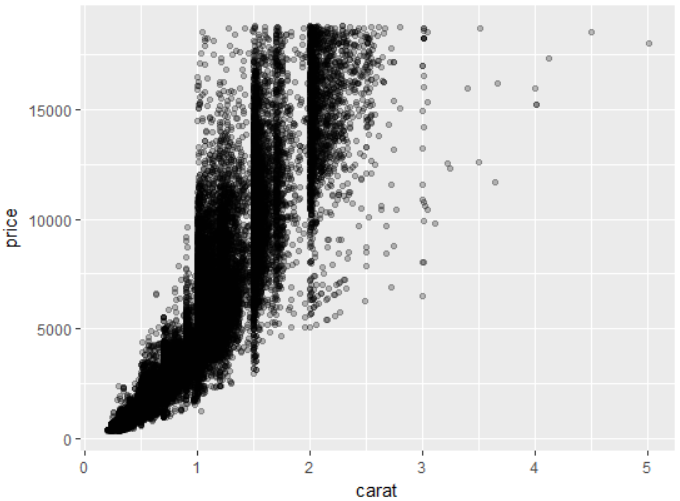
There is a clear intensive point’s overplotting. If you want to display
the number of values in the plot area, you can also use geom_hex
geometry layer. In this case (just as for point geometry) you define
two positional aesthetic properties – x and y. Program automatically
divide the area into individual hexagons and calculate the occurrence
of cases in these hexagons. Subsequently, this number (count) is
displayed in the aesthetic property – fill.
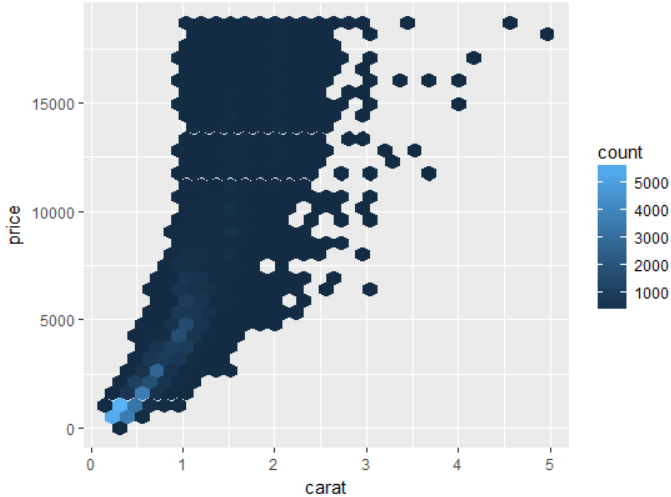
By default, the program creates 30 hexagons. This number is often
not sufficient and we need to change it. For this we use the
bins property. In the following figure, we've reduced the
number of hexagons to 20.
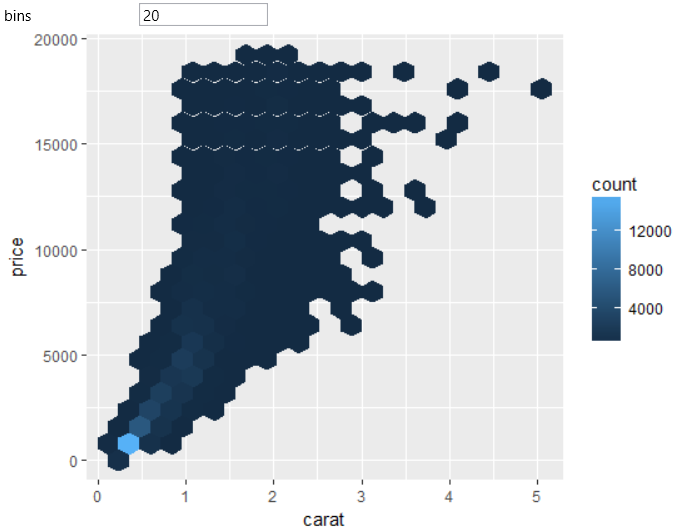
You can also use the binwidth property to set the hexagon size, which defines
the hexagon size in both directions (horizontally and vertically). Size
is defined by the R function c(). In the following figure, the hexagon
size was defined to 0.3 in the horizontal and 500 in the vertical direction.
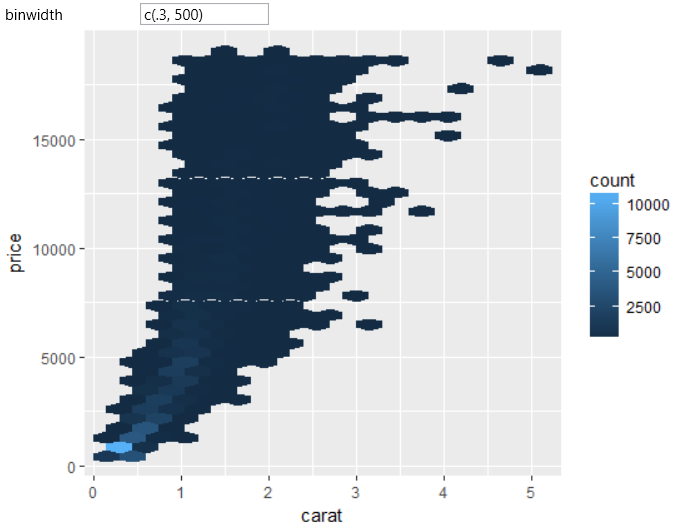
For display, you can use default color palette or you can specify your
own, using objects from the scale_fill group. An example of custom-defined
color palette is shown in the following figure. In this case, we define
the color scale using the rainbow palette and these colors were applied
to values (count) higher than 1. The hexagons with value of 1 are
displayed by default in a gray color (na.value).
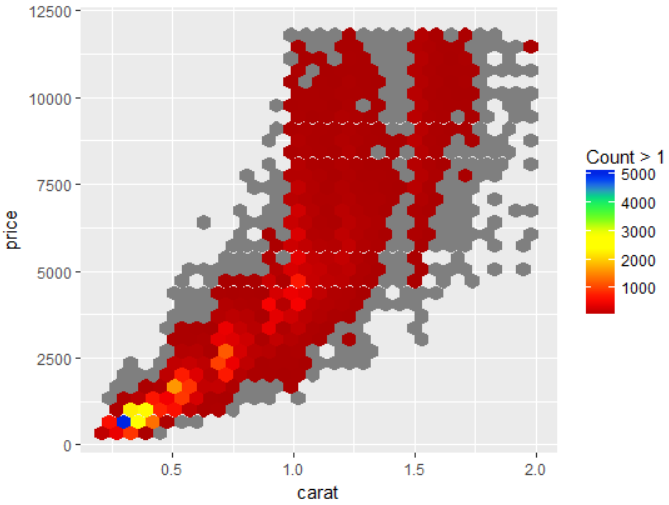
In the same way, it is possible to define geom_bin2d geometry layer,
which displays counts in rectangles. Alternatively, you can use
geom_density_2d for the same purpose (spatial distribution).